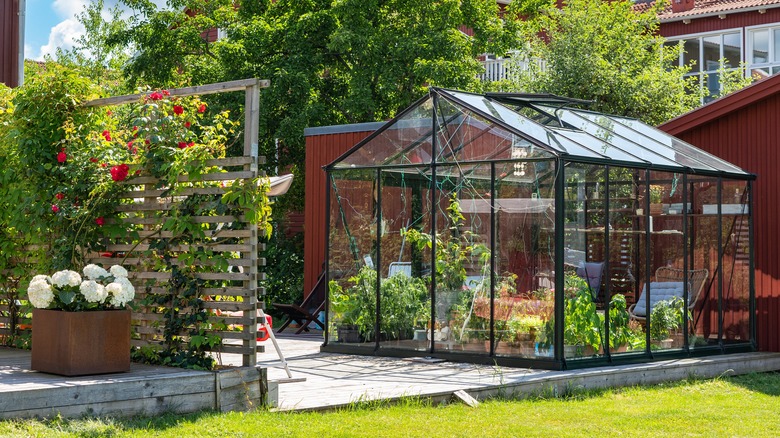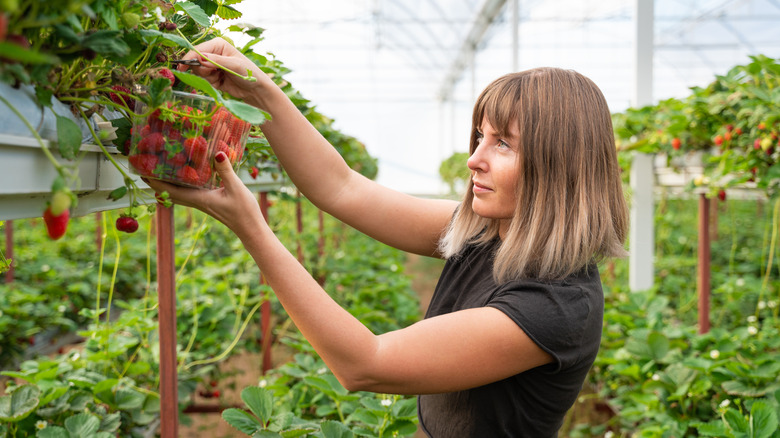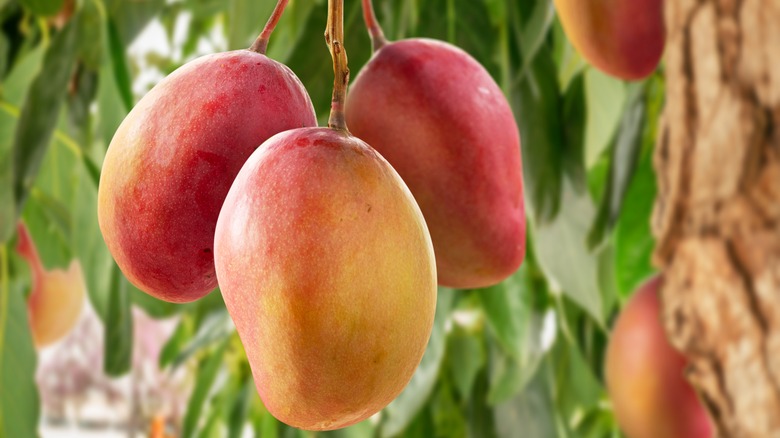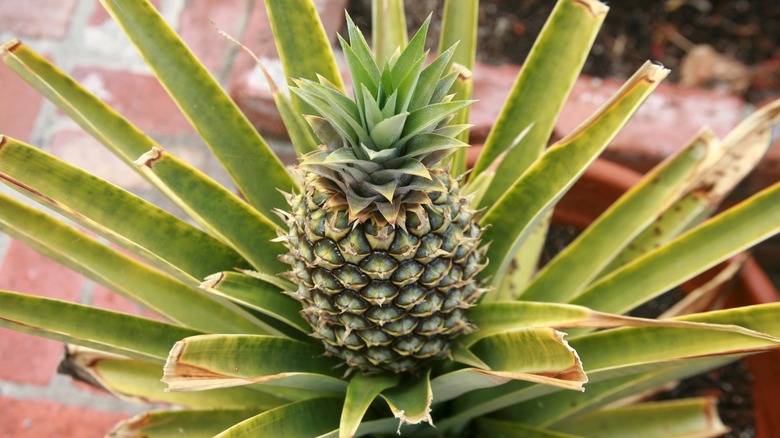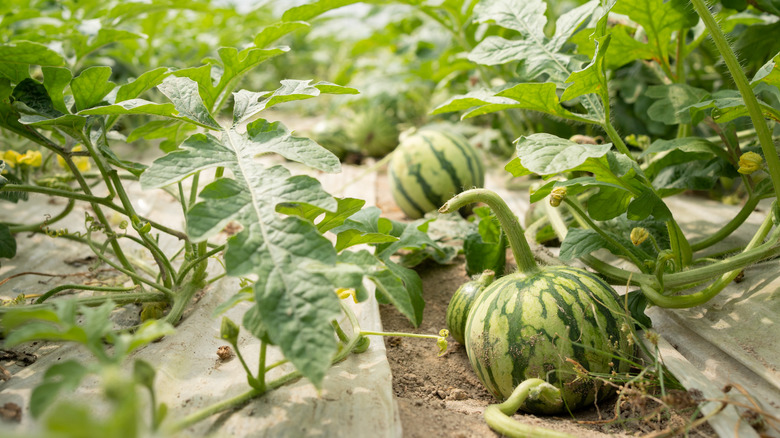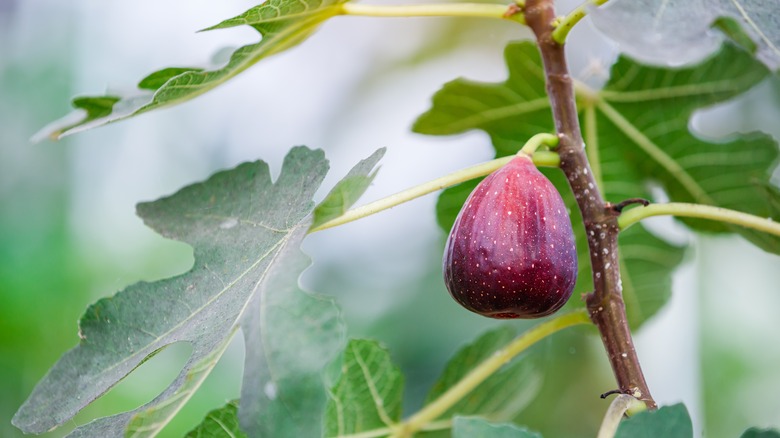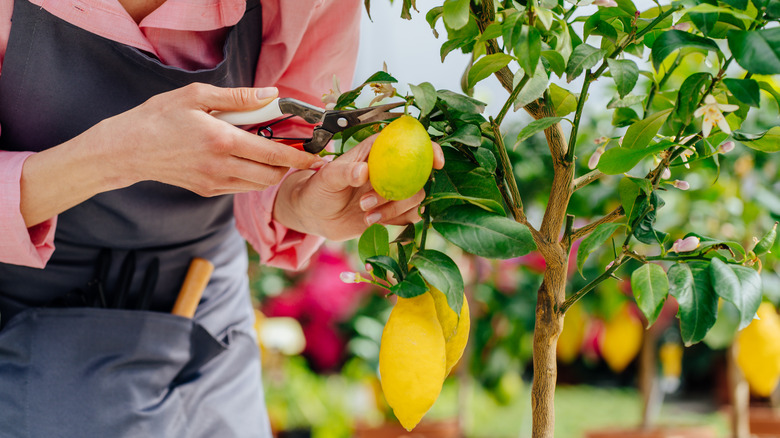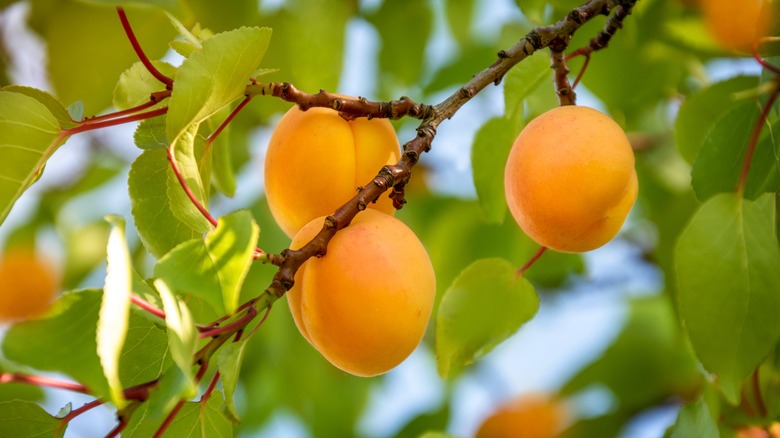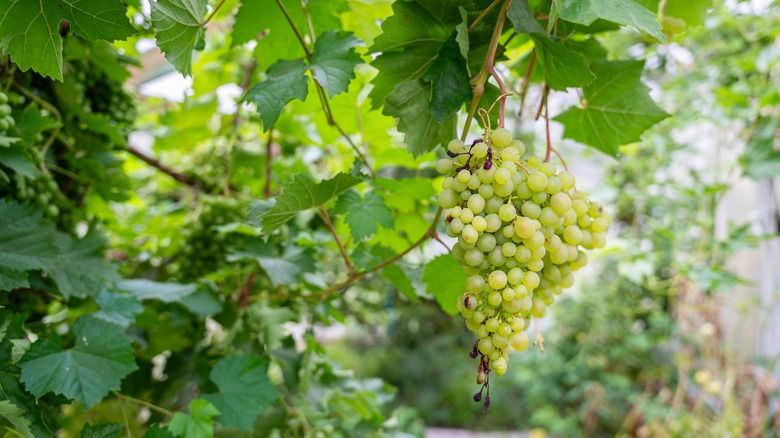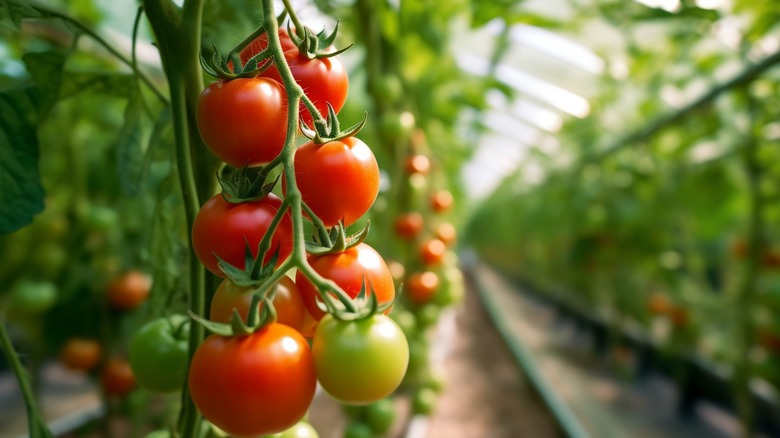These 9 Fruits Will Thrive In Your Greenhouse Garden
If you're looking to step up your home gardening game, consider exploring some of the advantages of growing plants in a greenhouse. Building a separate structure just for growing your own produce might seem like an unnecessary step, but in many situations, the benefits outweigh the costs. Greenhouses give you more space to dedicate to planting, protect plants from pests, help optimize your use of resources like fertilizer and water, and will allow you to control the environment so you can grow plants that are out-of-season or would otherwise be unlikely to survive in your area.
This last benefit is why many people choose to take the leap and try out greenhouse gardening, especially if they live in areas that have harsher winters or particularly dry weather. This additional control and year-round consistency can open up a whole new world of options, but greenhouses still have their limitations. Greenhouses are often short on space, so it's important to choose options that don't need a massive amount of room. Also, greenhouses typically create a more humid, warm, and sunny environment, so plants that shine in chilly or dry climates might not be particularly happy in the space. Luckily, there are plenty of different plant varieties, from strawberries to melons to tomatoes, that thrive in greenhouses so you can enjoy delicious, home-grown fruit year-round.
1. Strawberries
Strawberries are a great beginner plant because they're fairly easy to cultivate, but to extend their growing season and protect them from external pests, plant them in a greenhouse. Harsher winters can wreak havoc on your strawberry plants, so keeping them in a temperate greenhouse environment with plenty of sun exposure can help them produce fruit and stay healthy for longer. As an added bonus, there are plenty of companion plants that get along well with your strawberries, so you can save space in your greenhouse by cultivating multiple plants in one area.
2. Mangoes
Mangoes are typically grown in more temperate or tropical environments, but if you have a greenhouse, you can create the perfect conditions right at home. Because they thrive in warm, humid areas, they make for a fantastic candidate to grow in your greenhouse, especially if you're able to keep the temperature up during the winter. However, most people don't have the space for a full-size mango tree in their greenhouse, so look for dwarf varieties. These smaller trees can be comfortably contained in a pot and usually grow between 6 and 13 feet tall.
3. Pineapple
Unless you live in a tropical environment, you'll likely have to cultivate a pineapple plant indoors or in a greenhouse. These plants thrive in warm, relatively humid, and sunny conditions, but they can't handle temperatures below 50 degrees, so they're great to pair with other tropical plants in your greenhouse if you're committed to keeping the temperature up throughout the year. Pineapple plants do take about 2 years to produce fruit, so they might not be the best option if you're looking for an immediate harvest, but the long wait makes the final reward that much sweeter.
4. Melons
Because melons grow best in warmer environments and are not particularly hardy in colder temperatures, the warmth and protection of a greenhouse can help them thrive. There are many varieties you can cultivate, from cantaloupes to watermelon, that will give you plenty of bang for your buck and a ton of fruit to enjoy once they're ready to harvest. However, these trailing plants take up a fair amount of space, so they may not be the best choice if you're working with a small greenhouse or want to maximize the number of plants you can grow.
5. Figs
Fig trees aren't particularly difficult to grow, but if you want to cultivate them in a hardiness zone lower than 6, they need a bit of special attention during colder months to ensure they will spring back once temperatures rise. With the help of a greenhouse, you can streamline the growing process. If you're able to keep the temperature of your greenhouse above 28 degrees Fahrenheit during cold months, your tree should stay healthy. If the tree is taking up too much space, you can put the pot outside once spring rolls around.
6. Citrus
Citrus trees are another variety of fruiting plant that can face issues in colder climates, making them the perfect candidate for greenhouses. It's common to run into problems with citrus trees when growing them outside, but once you can control the environment, their care becomes simpler. Keep your greenhouse above 50 degrees Fahrenheit year-round, ensure the humidity levels stay at around 50%, and place your trees in an area where they receive a moderate amount of sunlight. If you're tight on space, opt for a smaller variety that can be grown in a container, like the Improved Meyer lemon.
7. Apricots
Apricots are an often-overlooked fruit, but they can bring great flavor and variety to your harvests. Like many other fruit trees, they don't do well in chillier temperatures, so greenhouse cultivation can help prevent damage. They love heat and sun, so they'll thrive soaking up the rays right up against a greenhouse window, and there are dwarf varieties that can help to save space in your greenhouse. If you're tight on room, plants in pots can be placed outdoors most of the year and temporarily overwintered in the greenhouse until spring weather starts to roll back around.
8. Grapes
If you're willing to sacrifice the space and put in a bit of work, grapevines can make a fantastic addition to a greenhouse garden. Because they spread so quickly, it's best to start with one vine and work your way up. Plant the roots of the grapes outside of the greenhouse if possible, then weave the vines into the interior space and allow them to continue to grow. Grapes grown inside the greenhouse might need a bit more help with pollination, so, when the plant is flowering, give the stems a good shake to help pollen transfer between flowers.
9. Tomatoes
Whether you prefer to refer to tomatoes as fruits or vegetables, you can rest assured that they will make a fantastic edible addition to the plants in your greenhouse. Tomatoes love warm weather, so cultivating them in a more temperate environment can help to extend their growing season and leave you with a larger harvest. There are a massive number of tomato varieties to choose from, so if you're feeling overwhelmed, keep an eye out for seeds that are specifically labeled as "greenhouse varieties" to guarantee that they're the right fit for your growing conditions.
